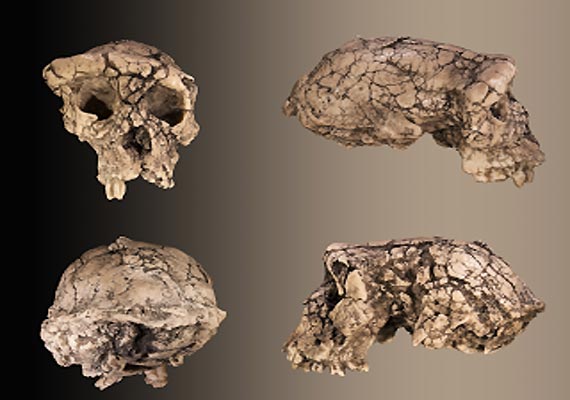An international team of scientists has announced the discovery of a 6.1-million-year-old relatively complete and largely undistorted juvenile cranium of the fossil ape Lufengpithecus lufengensis at the Miocene site Shuitangba in Yunnan Province, China.

The cranium of juvenile Lufengpithecus lufengensis found at the site of Shuitangba (Xue-Ping Ji / Yunnan Institute of Cultural Relics and Archaeology).
Juvenile crania of apes and hominins are extremely rare in the fossil record, especially those of infants and young juveniles. The Lufengpithecus fossil is only the second relatively complete cranium of a young juvenile in the entire Miocene record of fossil apes throughout the Old World, and both were discovered from the late Miocene of Yunnan Province.

The cranium is also noteworthy for its age. It dates to near the end of the Miocene, a time when apes had become extinct in most of Eurasia.
“The fossils recovered from Shuitangba constitute one of the most important collections of late Miocene fossils brought to light in recent decades because they represent a snapshot from a critical transitional period in earth history,” said Prof Nina Jablonski from Pennsylvania State University, a second author of the paper published in the Chinese Science Bulletin.

“The ape featured in the current paper typifies animals from the lush tropical forests that blanketed much of the world’s subtropical and tropical latitudes during the Miocene epoch, while the monkey and some of the smaller mammals exemplify animals from the more seasonal environments of recent times.”
“In living ape species, cranial anatomy in individuals at the same stage of development as the new fossil cranium already show a close resemblance to those of adults. Therefore, the new cranium, despite being from a juvenile, gives researchers the best look at the cranial anatomy of Lufengpithecus lufengensis. Partly because of where and when Lufengpithecus lived, it is considered by most to be in the lineage of the extant orangutan, now confined to Southeast Asia but known from the late Pleistocene of southern China as well,” said study senior author Dr Jay Kelley from Arizona State University.

The Lufengpithecus cranium in frontal view, left, lateral view (XuePing Ji et al).
However, the Lufengpithecus cranium shows little resemblance to those of living orangutans, and in particular, shows none of what are considered to be key diagnostic features of orangutan crania. Lufengpithecus therefore appears to represent a late surviving lineage of Eurasian apes, but with no certain affinities yet clear.
The survival of this lineage is not entirely surprising since southern China was less affected by climatic deterioration during the later Miocene that resulted in the extinction of many ape species throughout the rest of Eurasia.

The team is hopeful that further excavations will produce the remains of adult individuals, which will allow them to better assess the relationships among members of this lineage as well as the relationships of this lineage to other fossil and extant apes.
Source: sci.news








